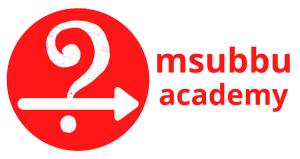CRE-Class-1-Summary
17-July-2025
Kinetics of Homogeneous Reactions
Quick Recap
The meeting covered fundamental concepts in chemical reaction engineering, including extent of reaction, conversion calculations, and reaction order determination. MSubbu explained how to solve for concentrations using stoichiometry and extent of reaction, and discussed the importance of understanding volume changes in batch reactors. The session concluded with a discussion on non-elementary reactions and rate expressions, along with advice for students regarding course materials and upcoming revision classes.
Next Steps
- Students to spend more time regularly accessing and studying the course contents.
- Students to complete the kinetics portion of CRE by additional self-study before the next class.
- MSubbu to conduct the next class on Sunday covering design of ideal reactors.
- MSubbu to decide on and schedule the first discussion class for CRE, likely on Monday or Wednesday.
SUMMARY
Understanding Reaction Extent and Conversion
MSubbu discussed the concepts of extent of reaction and conversion in chemical reactions, using the ammonia synthesis reaction as an example. He explained how to calculate the extent of reaction from given molar flow rates and stoichiometry, and how to determine conversion based on the limiting reactant. MSubbu also covered how to use conversion to calculate molar flow rates for different components in the reaction. He emphasized that both extent of reaction and conversion can be used to solve problems in chemical reaction engineering, and that understanding the connection between these concepts is important for chemical engineers.
Reaction Order and Rate Constants
MSubbu discussed the determination of reaction order and rate constants from conversion data. He explained how to identify a first-order reaction by observing that conversion is independent of initial concentration, which matches the given data. MSubbu also covered fractional-order reactions, noting their unique property of completing in finite time, and solved a problem involving a half-order reaction. Finally, he addressed the topic of maximum conversion in reversible reactions by explaining how to find the equilibrium conversion using the given rate constants.
Chemical Reaction Concentration Calculations
MSubbu explained the process of solving for concentrations in a chemical reaction using the extent of reaction formula and stoichiometry. He demonstrated how to write expressions for reactants and products in terms of initial concentrations and the extent of reaction, and showed how to use these expressions to find the conversion and final concentrations. MSubbu also covered how to determine the order of a reaction using half-life data and logarithmic plots, explaining the steps to derive the rate equation and calculate the reaction order from the slope of the logarithmic plot.
Batch Reactor Volume Dynamics
MSubbu discussed the concept of variable volume reactions in a batch reactor, focusing on how volume changes with conversion while maintaining constant pressure and temperature. He explained that the volume expansion factor (\(\varepsilon_A\)) can be calculated based on the initial and final volumes, and demonstrated how to determine the minimum inert content needed to limit the final volume to three times the initial volume. The discussion concluded with an explanation of how volume changes linearly with conversion under isothermal conditions, and mentioned that correction would be needed for changes in temperature and pressure.
Non-Elementary Reaction Rate Expressions
MSubbu discussed the concept of non-elementary reactions, explaining how to write rate expressions for reactions involving multiple elementary steps. He used the decomposition of azo-methane as an example to illustrate the process of writing rate expressions in terms of measurable concentrations using pseudo-steady state approximation. MSubbu also mentioned that the order of the reaction changes from first order to second order at low concentrations of the reactant.
He advised students to spend more time studying and accessing course materials regularly, as the next revision classes will be more focused and shorter in duration.
